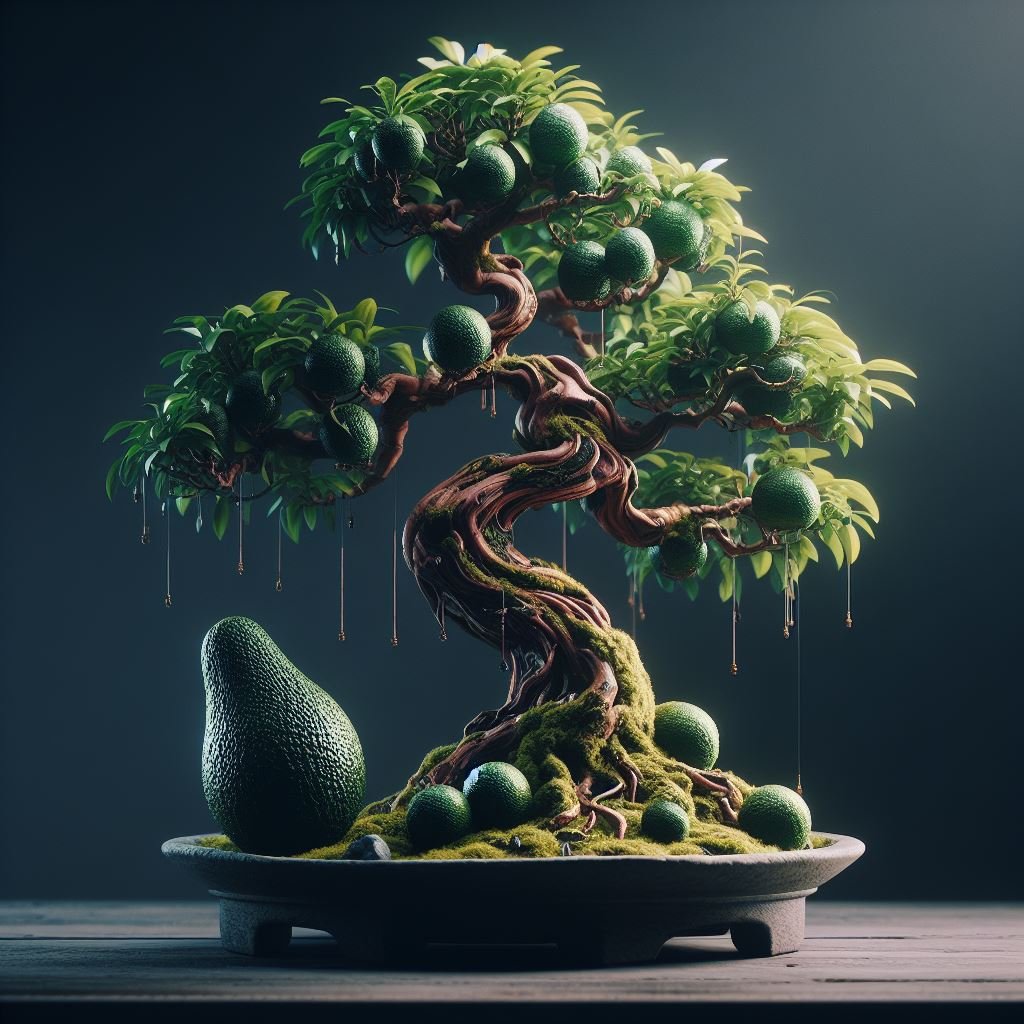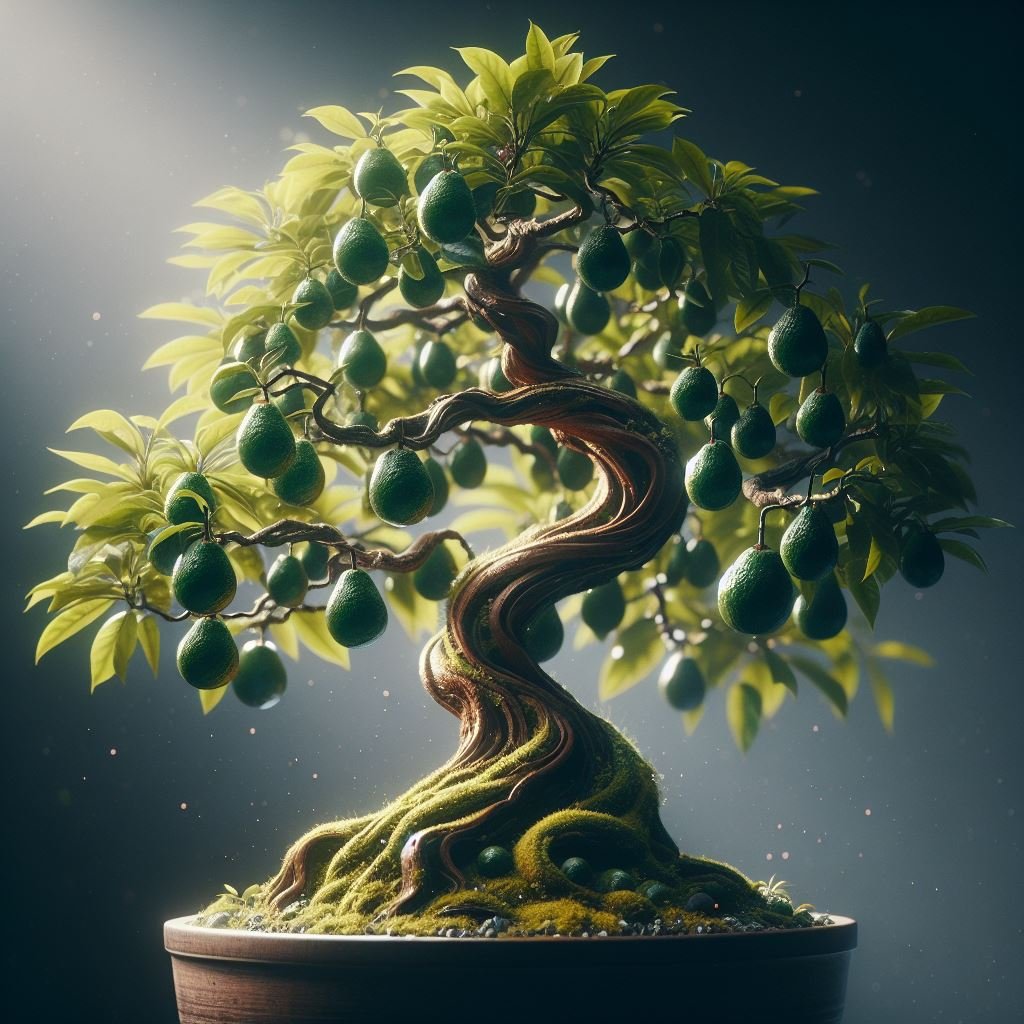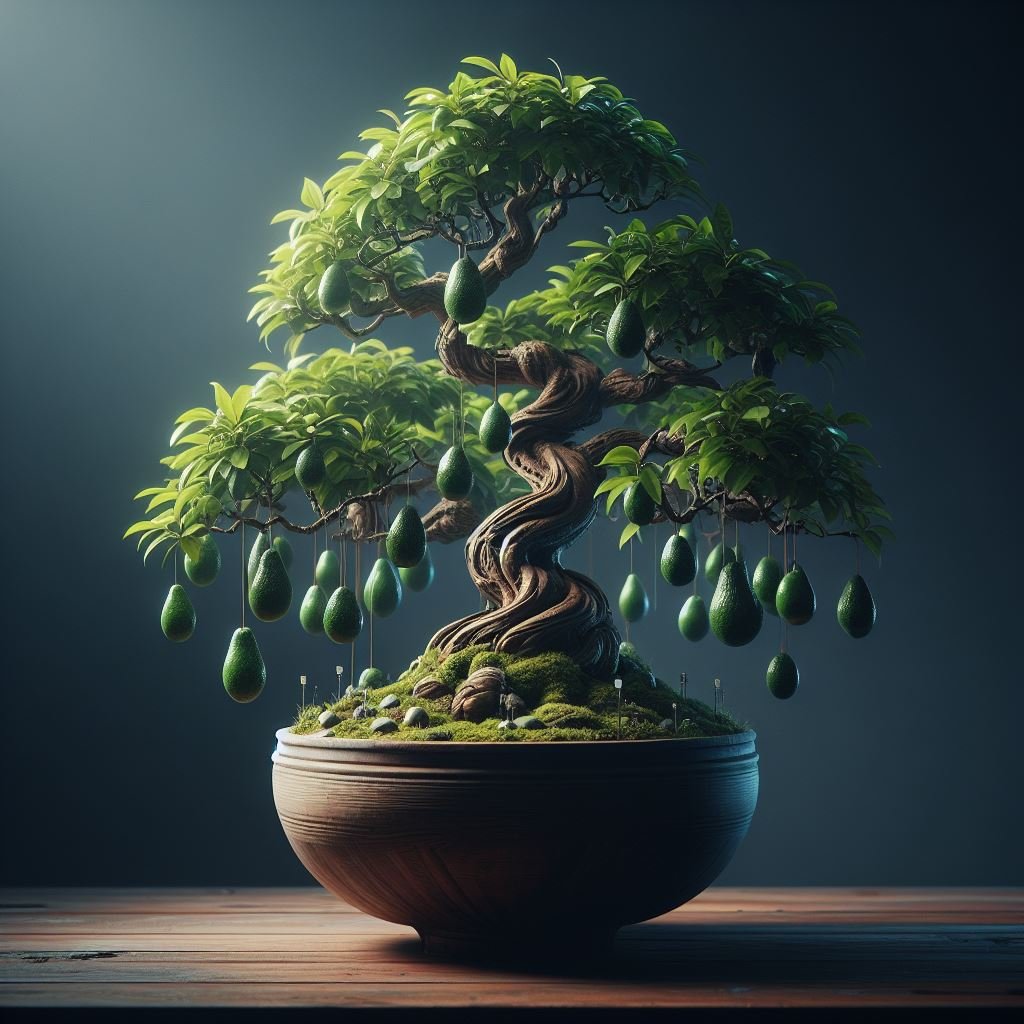Introduction
Bonsai is an ancient art form involving the cultivation of miniature trees in containers. It’s a practice that marries horticulture with aesthetics, creating living sculptures that can bring peace and beauty to any space. Among the many varieties of bonsai, the bonsai avocado tree holds a special allure. Its broad, glossy leaves and potential for bearing fruit make it a rewarding and intriguing choice for bonsai hobbyists.
Growing a Bonsai Avocado Tree from Seed
Growing a bonsai avocado tree from a seed is a relatively simple process that requires patience and care. Here’s a step-by-step guide to get you started:

- Prepare Your Seed: Start with a ripe avocado. Cut it open, remove the seed, and rinse it under warm water to remove any remaining fruit.
- Germinate the Seed: Stick three or four toothpicks into the seed, around its circumference. Balance the seed on the rim of a glass of water, with the bottom half of the seed submerged. Place the container in a warm place, but out of direct sunlight.
- Patience is Key: After a few weeks, your seed will start to split, and a sprout will emerge from the top and roots from the bottom. Wait until the stem is about six inches tall before proceeding to the next step.
- Potting: Once the stem is long enough, pot your seedlings in a well-drained pot using a mix of soil and compost. Remember, bonsai is all about restricting growth, so choose a small container.
Care and Maintenance
Caring for and maintaining a bonsai avocado tree requires consistent attention. Here are some important steps you should follow to ensure your bonsai thrives:
Watering: Bonsai trees require careful watering. The top layer of soil should be allowed to dry out before watering again. Overwatering can lead to root rot, while underwatering can cause the tree to dry out.
Fertilizing: During the growing season, usually in spring and summer, fertilize your bonsai regularly with a balanced bonsai fertilizer.
Pruning: Regular pruning is necessary to maintain the bonsai’s shape and size. This includes both the foliage and the roots. Prune back to two leaves after about six to eight leaves have grown.
Repotting: Bonsai trees need to be repotted every two to five years. When repotting, trim the roots back by about one-third to help maintain its small size.
Location: Avocado bonsai trees prefer a sunny location, but they also need protection from intense midday sun. Indoor bonsai should be placed at a bright window facing west or south.
Temperature: Keep your bonsai in a warm place, ideally between 60°F and 85°F. While it can tolerate cooler temperatures, avoid exposing it to frost.
Common Issues and Solutions
Like all plants, bonsai avocado trees can experience their share of problems. Here are some common issues and how to address them:

Pests: Mealybugs, aphids, and spider mites can sometimes be a problem. If you see any signs of these pests, treat your tree with a mild insecticidal soap.
Diseases: Root rot can occur if the tree is overwatered. If your tree’s leaves start to yellow or drop, check the roots and adjust your watering schedule accordingly.
Leaf Burn: If your tree gets too much direct sunlight, its leaves can get sunburned, resulting in brown, crispy edges. If this happens, move your tree to a location where it receives filtered light.
With proper care and attention, your bonsai avocado tree can remain healthy and stunning for years to come.
Benefits of Having a Bonsai Avocado Tree
Beyond the sheer joy of watching your miniature tree thrive, growing a bonsai avocado tree offers multiple benefits:
Aesthetic Appeal: A bonsai avocado tree is a unique decor element that adds a touch of nature and sophistication to any space.
Educational Value: The process of growing and maintaining a bonsai tree can be a wonderful educational journey, teaching patience, attention to detail, and the principles of art and horticulture.
Potential for Harvesting Avocados: While it’s not guaranteed, if your bonsai avocado tree matures and flowers, you may have the chance to harvest your own mini avocados. Imagine the joy of plucking homegrown avocados from your very own bonsai tree!
Growing Bonsai Avocado tree with fruit
Bonsai avocado trees can indeed bear fruit, adding an additional level of interest to these already stunning miniature trees. However, not all bonsai avocado trees produce fruit, and those that do often produce smaller fruits compared to their full-sized counterparts.
Avocado trees are warm-weather plants that produce small yellow blossoms. They are generally grafted for commercial fruit production, but home gardeners can also grow them as bonsai trees.
The optimal temperature for an avocado bonsai tree to produce fruit is between 65 – 75 F. Additionally, it’s recommended to plant your avocado bonsai tree between March and June.
However, growing a bonsai avocado tree can be a complex process. It involves careful watering, regular pruning, and repotting every two to five years. Despite the challenges, the process can be rewarding, especially when you see your bonsai tree bear fruit.
Remember, each bonsai tree is unique and will require different care. Regular observation and adjustment will keep your bonsai avocado tree healthy and beautiful.
Footnotes
From Seed to Sculpture: My Year with an Avocado Bonsai
It was a year ago when I embarked on the unique gardening journey of nurturing an avocado bonsai. The seed that seemed so insignificant then has now transformed into a beautifully sculpted miniature tree, gracing my living room with its presence.
The journey started with carefully extracting the seed from a ripe avocado and suspending it in water using toothpicks. The waiting period was a test of patience as it took several weeks for the first sign of life to appear – a tiny root stretching out from the seed.

Once the seed sprouted, the real work began. Transplanting it into a pot filled with well-draining soil was the next step. The young plant was then placed in a location with ample indirect sunlight, replicating the natural habitat of an avocado tree.
Over time, the sapling grew, and the process of shaping it into a bonsai began. I learned about the art of pruning – a delicate balance between encouraging growth and maintaining a miniature size. It was a therapeutic process, watching each leaf unfold and deciding which branches to trim to maintain its shape.
Watering became a ritual, careful not to overwater and cause root rot, but enough to prevent the tree from drying out. Fertilizing during the growing season helped boost its health and encouraged lush growth.
One year later, the avocado bonsai tree stands as a testament to patience, care, and the wonders of nature. It’s a living piece of art that continues to grow and evolve, just like my journey with it.
In retrospect, the journey of growing a bonsai avocado tree has been a fulfilling experience, teaching me lessons in patience, nurturing, and the beauty of nature’s resilience. As I look forward to another year of this journey, I am excited about the new challenges and learning experiences that await.
Conclusion
Growing a bonsai avocado tree from seed can be a rewarding experience, offering not only the opportunity to create a unique piece of living art but also the potential for delicious, homegrown avocados. This guide provides you with the basics, but remember, bonsai is as much an art as it is a science. Feel free to experiment, learn from your experiences, and most importantly, enjoy the process. So, why not give it a try? Your bonsai avocado tree awaits!
Frequently Asked Questions (FAQs)
How long does it take for a bonsai avocado tree to bear fruit?
A1: A bonsai avocado tree, like a regular avocado tree, may take anywhere from five to thirteen years to bear fruit. However, keep in mind that the fruiting process is not guaranteed in bonsai trees.
Can all avocado varieties be used for bonsai?
While any avocado variety can technically be used for bonsai, some are more suitable than others. The “Hass” avocado is a popular choice due to its smaller, more manageable size.
My bonsai avocado tree’s leaves are curling. What’s wrong?
Leaf curling can be a sign of several issues, including overwatering, underwatering, or pest infestation. Check your watering schedule, inspect for pests, and adjust as necessary.
Do bonsai avocado trees need to be repotted?
Yes, bonsai avocado trees need to be repotted every two to three years. This helps to replenish the soil’s nutrients, gives the roots space to grow, and keeps the tree healthy.
Can my indoor bonsai avocado tree survive in winter?
Yes, it can, provided that you keep it in a warm place with plenty of natural sunlight. Remember to avoid exposure to frost as avocado trees are a subtropical species.





